45cm x 34cm. Killarney Co Kerry
Theatrical advertising poster for "The way to Kenmare".- Bluebeard's Seven Wives (1926)


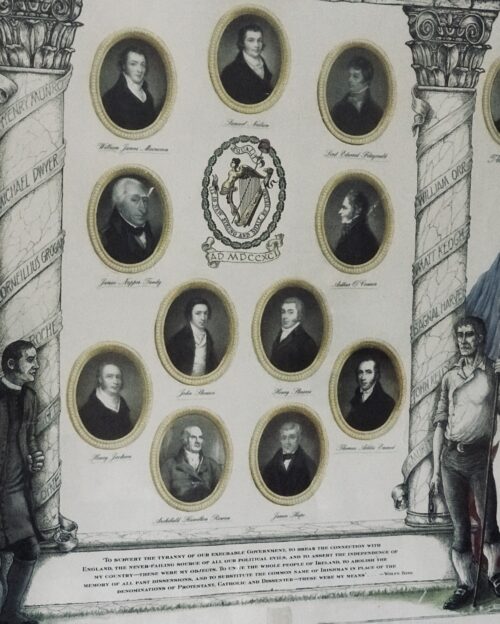
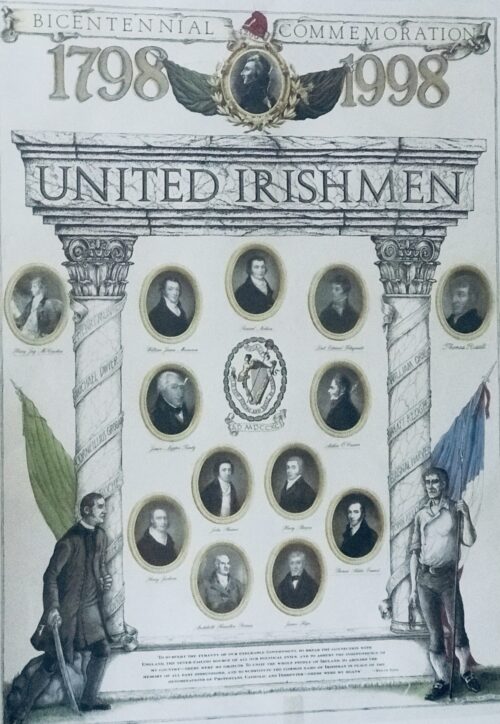










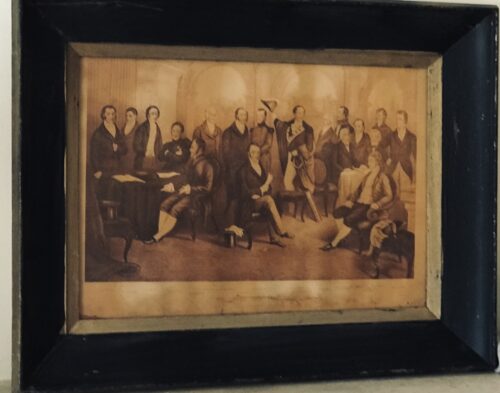











Since the days of O'Connell a larger public demonstration has not been witnessed than that of Sunday last. About 1 o'clock the monster procession started from Claremorris, headed by several thousand men on foot – the men of each district wearing a laural leaf or green ribbon in hat or coat to distinguish the several contingents. At 11 o'clock a monster contingent of tenant-farmers on horseback drew up in front of Hughes's hotel, showing discipline and order that a cavalry regiment might feel proud of. They were led on in sections, each having a marshal who kept his troops well in hand. Messrs. P.W. Nally, J.W. Nally, H. French, and M. Griffin, wearing green and gold sashes, led on their different sections, who rode two deep, occupying, at least, over an Irish mile of the road. Next followed a train of carriages, brakes, cares, etc. led on by Mr. Martin Hughes, the spirited hotel proprietor, driving a pair of rare black ponies to a phæton, taking Messrs. J.J. Louden and J. Daly. Next came Messrs. O'Connor, J. Ferguson, and Thomas Brennan in a covered carriage, followed by at least 500 vehicles from the neighbouring towns. On passing through Ballindine the sight was truly imposing, the endless train directing its course to Irishtown – a neat little hamlet on the boundaries of Mayo, Roscommon, and Galway.Evolving out of this a number of local land league organisations were set up to work against the excessive rents being demanded by landlords throughout Ireland, but especially in Mayo and surrounding counties. From 1874 agricultural prices in Europe had dropped, followed by some bad harvests due to wet weather during the Long Depression. The effect by 1878 was that many Irish farmers were unable to pay the rents that they had agreed, particularly in the poorer and wetter parts of Connacht. The localised 1879 Famine added to the misery. Unlike many other parts of Europe, the Irish land tenure system was inflexible in times of economic hardship.
..."first, to bring about a reduction of rack-rents; second, to facilitate the obtaining of the ownership of the soil by the occupiers". That the object of the League can be best attained by promoting organisation among the tenant-farmers; by defending those who may be threatened with eviction for refusing to pay unjust rents; by facilitating the working of the Bright clauses of the Irish Land Act during the winter; and by obtaining such reforms in the laws relating to land as will enable every tenant to become owner of his holding by paying a fair rent for a limited number of years".Charles Stewart Parnell, John Dillon, Michael Davitt, and others then went to the United States to raise funds for the League with spectacular results. Branches were also set up in Scotland, where the Crofters Party imitated the League and secured a reforming Act in 1886. The government had introduced the first Land Act in 1870, which proved largely ineffective. It was followed by the marginally more effective Land Acts of 1880 and 1881. These established a Land Commission that started to reduce some rents. Parnell together with all of his party lieutenants, including Father Eugene Sheehyknown as "the Land League priest", went into a bitter verbal offensive and were imprisoned in October 1881 under the Irish Coercion Act in Kilmainham Jail for "sabotaging the Land Act", from where the No-Rent Manifesto was issued, calling for a national tenant farmer rent strike until "constitutional liberties" were restored and the prisoners freed. It had a modest success In Ireland, and mobilized financial and political support from the Irish Diaspora. Although the League discouraged violence, agrarian crimes increased widely. Typically a rent strike would be followed by eviction by the police and the bailiffs. Tenants who continued to pay the rent would be subject to a boycott, or as it was contemporaneously described in the US press, an "excommunication" by local League members.Where cases went to court, witnesses would change their stories, resulting in an unworkable legal system. This in turn led on to stronger criminal laws being passed that were described by the League as "Coercion Acts". The bitterness that developed helped Parnell later in his Home Rule campaign. Davitt's views as seen in his famous slogan: "The land of Ireland for the people of Ireland" was aimed at strengthening the hold on the land by the peasant Irish at the expense of the alien landowners.Parnell aimed to harness the emotive element, but he and his party were strictly constitutional. He envisioned tenant farmers as potential freeholders of the land they had rented. In the Encyclopedia Britannica, the League is considered part of the progressive "rise of fenianism".




The most haunting and poignant image of Irish involvement in the first World War is at the centre of an unsolved art mystery.
The Last General Absolution of the Munsters at Rue du Bois – a painting long presumed lost – depicts soldiers of the Royal Munster Fusiliers regiment receiving “general absolution” from their chaplain on the eve of battle in May 1915. Most of them died within 24 hours.
The painting, by Italian-born war artist Fortunino Matania, became one of the most famous images of the war when prints of it were published in illustrated weekly newspapers.
Copies hung in houses & pubs throughout Ireland, and especially Munster, but, as Irish public opinion towards the war changed, the picture gradually disappeared from view.A copy still hangs in the famous pub Larkins of Garrykennedy Co Tipperary to this day.
Centenary commemorations of the first World War have prompted renewed interest in the whereabouts of the original painting among art and military historians.
A widely held theory that the painting was lost when archives were destroyed in a fire during the blitz of London in 1940 is “very much” doubted by English historian Lucinda Gosling, who is writing a book about the artist.
She told The Irish Times there was no definitive proof to confirm this theory and it was possible the original painting was still “out there”.
The painting could, conceivably, be in private hands or, more improbably, be lying forgotten or miscatalogued in a museum’s storage area. Matania’s work occasionally turns up at art auctions, but there has been no known or publicly-documented sighting of the original Munsters painting.
Ms Gosling described Matania as an artist “able to work at great speed, producing pictures that were unnervingly photographic in their realism”.
His pictures, she said, had “reached and influenced millions” and “he combined skill and artistry with a strong streak of journalistic tenacity”.
The painting is imbued with a sense of impending doom.
In Catholic canon law, a priest may grant general absolution of sin to a gathering of the faithful where there is imminent danger of death and no time for individual confessions.
In the painting, the Irish chaplain Fr Francis Gleeson is shown blessing the men: “Misereatur vestri omnipotens Deus; et dimissis omnibus peccatis vestris, perducat vos Iesus Christus ad vitam aeternam” (May Almighty God have mercy on you, and having forgiven all your sins, may Jesus Christ bring you to life everlasting).
The men then sang the hymns Te Deum and Hail Glorious St Patrick.
The artist was not present at the scene but based his painting on a written account by Lieut- Col Rickard’s widow, Jessie, who is believed to have commissioned the painting in memory of her husband.
She had gathered eye-witness accounts from survivors and wrote: “There are many journeys and many stopping- places in the strange pilgrimage we call life, but there is no other such journey in the world as the journey up a road on the eve of battle, and no stopping- place more holy than a wayside shrine.”
She noted among the troops were “lads from Kerry and Cork, who, a year before, had never dreamed of marching in the ranks of the British army”.
“The Munsters were wild with enthusiasm; they were strong with the invincible strength of faith and high hope, for they had with them the vital conviction of success, the inspiration that scorns danger – which is the lasting heritage of the Irish; theirs still and theirs to remain when great armaments and armies and empires shall be swept away, because it is immovable as the eternal stars.”
Mown down
The following morning, Sunday May 9th, most of the Irish soldiers were mown down by German gunfire and shelling.
On a catastrophic day for the British army – over 11,000 casualties – the Royal Munster Fusiliers suffered dreadful losses. Exact estimates vary, but one account records 800 Munsters went into battle and only 200 assembled that evening.
Mrs Rickard concluded : “So the Munsters came back after their day’s work; they formed up again in the Rue du Bois, numbering 200 men and three officers. It seems almost superfluous to make any further comment.”
The Last General Absolution of the Munsters at Rue du Bois
The Painting
The Last General Absolution of the Munsters at Rue du Bois shows some of the hundreds of soldiers from the second battalion of the Royal Munster Fusiliers who gathered at a shrine near the village of Rue du Bois on the western front on Saturday, May 8th, 1915.
The image was published in the London illustrated weekly newspaper The Sphere in November 1916, and in 1917 in the Weekly Freeman’s, an Irish publication. There are copies of the print in various museums and in private ownership in Ireland and Britain.
The Artist
Fortunino Matania, (1881- 1963) was born in Naples and was a well-known artist and illustrator in Italy before moving to London in 1902. He worked for The Sphere – an illustrated weekly newspaper – and became famous for depicting the sinking of the Titanic in 1912.
He was an official war artist in the first World War and his graphic illustrations of trench warfare were highly renowned.
The Location
Rue du Bois is located near the village of Neuve Chapelle in the Nord-Pas-de-Calais region of France close to the border with Belgium. According to the Royal Munster Fusiliers Association, the original shrine has long gone.
The Chaplain
Depicted on horseback, with hand raised granting general absolution, is Fr Francis Gleeson, a native of Templemore, Co Tipperary. He was ordained a priest in Maynooth in 1910 and volunteered to serve as a chaplain in the army at the outbreak of the war. He was assigned to the Royal Munster Fusiliers and served with distinction. He survived the war and returned to Ireland where he worked as priest in Dublin and died in 1959.
The Commanding Officer
Lieut-Col Victor Rickard, the other man on horseback, was born in Englandto an Irish father and English mother.
He was the commander of the battalion. He died in action the next day, aged 40.
The Patron
Lieut-Col Rickard’s widow Jessie, who is believed to have commissioned the painting, was the daughter of a Church of Ireland clergyman who spent her youth in Mitchelstown, Co Cork. She became a well-known novelist and published some 40 books.
After the war she converted to Catholicism under the guidance of another former chaplain in the British army in the first World War – Fr Joseph Leonard, who later befriended Jackie Kennedy.
Mrs Rickard died at Montenotte, Cork, in 1963, aged 86.






“Many arrested as city crowds run riot.”“Cars were overturned in Abbey Street and O’Connell Street, at least 50 people were treated for minor injuries, while three people were taken to hospital with fractured legs and arms.”A young man was also hospitalized after being stabbed. Two hundred police and three fire brigades arrived. Buses and taxis were halted in the melee. Only the ringing of the fire bells seemed to settle down the crowd, but soon more crowds arrived and fights began anew. “One group of youths pushed a parked car into half a dozen policemen who were trying to get them out of the street,” reported the Times. “St John’s Ambulance men treated men and women on the footpaths while the crowds swirled around them.”
“A pity, this, because the Beatles, in spite of their theatrical gimmicks, their long locks, and ‘with-it’ suits, have a great act…God knows, Dublin has never seen anything like the Beatles.”Indeed they had not. Nor would they ever see their likes again. Despite their multiple Irish connections, the four lads would never be back, and more’s the pity.


“Many arrested as city crowds run riot.”“Cars were overturned in Abbey Street and O’Connell Street, at least 50 people were treated for minor injuries, while three people were taken to hospital with fractured legs and arms.”A young man was also hospitalized after being stabbed. Two hundred police and three fire brigades arrived. Buses and taxis were halted in the melee. Only the ringing of the fire bells seemed to settle down the crowd, but soon more crowds arrived and fights began anew. “One group of youths pushed a parked car into half a dozen policemen who were trying to get them out of the street,” reported the Times. “St John’s Ambulance men treated men and women on the footpaths while the crowds swirled around them.”
“A pity, this, because the Beatles, in spite of their theatrical gimmicks, their long locks, and ‘with-it’ suits, have a great act…God knows, Dublin has never seen anything like the Beatles.”Indeed they had not. Nor would they ever see their likes again. Despite their multiple Irish connections, the four lads would never be back, and more’s the pity.




Speaking to the Irish Times in 2007 about the Rolling Stones’s 1982 concert, Slane Castle owner Lord Henry Mount Charles said Ireland had never seen anything like it before.
“The weather was beautiful, the show was magic. Mick Jagger came down the Thursday before the show and had dinner in the castle and the production crew slept in the drawing room of the castle the night before the show. It had an almost gypsy-like quality about it.”
Some 70,000 music fans paid £12 each for a ticket in 1982. Thousands arrived the night before to camp out wherever they could find a pitch around the village. Fans complained of being charged £5 for a six-pack of beer and £1 for a can of Coke, with one newspaper report at the time remarking that “every kind of huckster, three-card-trick man and itinerant salesman had a stall in Slane”.
The day of the concert, July 24th, saw brilliant sunshine, with those who weren’t sprayed by two massive water hoses taking advantage of the lack of security to swim in the River Boyne.
After the warm-up acts, which included the Chieftains, the Rolling Stones bounded on, with Mick Jagger proclaiming: “It’s great to be back in Dublin. After 16 years, it’s very nice of you to come, so let’s spend the night together.” Jagger showed a hazy knowledge of Irish geography and also of the band’s own history. They had last played Ireland in 1965.

They were a pretty audience. They brought their babies and some of them brought their mammies.In the interminable gaps between the live music they shinned over the 10-foot fence to leap into the Boyne and every mother’s son and daughter of them was decently clothed. Some stripped down to pants, some modestly leaped in fully clothed.
A ferocious, savage, vicious, terrifying gang of Hell’s Angels, from the badlands of Waterford, sat in a reeking huddle on the grass, shunned by 20 yards by the rest of the crowd. Hunched menacingly in their colours, they were eating Choc-Ices.
The crowd got younger all the way into the centre. Half way down were the 20-year-olds, sprawled out on rugs with their wine, in plastic bottles as per instructions, and their dope. The worst crime they committed was to fall sound asleep in the hot sun, and some slept right through the Stones.
Only in the first 10 rows, damped down by fire hoses and at one ecstatic moment sprayed with fire hose by Mick Jagger HIMSELF was there that wild dangerous electric excitement the media associates with huge rock concerts. They leaped and shrieked and held up imploring arms.
“You’re all right!” Mick Jagger yelled at them. “You’re not too bad yourself!” they shouted back.
Up at the top of the hill, up at the top of a 60 foot pine tree, a lunatic fan leaped up and down hysterically.
“It’s great to be back in Dublin,” Jagger assured them. Nobody had the heart to correct him.
By the last chords of the opening Under My Thumb a steady stream of denim was pouring up the slopes and out the gate. They’d waited 10 hours to see the Rolling Stones, and they’d seen the Rolling Stones; they knew exactly what they were going to play, so they left, perfectly happy.
People kept comparing the Stones concert to the Pope’s visit, but nobody ever left a Papal gig before the Last Blessing.

“Is it a bit much?” Mick Jagger asked while the central section of the massive stage, on which the Rolling Stones stood, levitated away from their backing band and moved through the awestruck crowd.
Excess is a term that has long been associated with the Stones, and their hi-tech, high energy performance seemed to strike the right chord with fans.
Concert goers who had paid some €60 extra for “Gold Circle” tickets, which entitled them to a standing space at front of the stage, most certainly got their money’s worth, as they stood a hair’s breadth away from their idols. Eventually the stage retracted and the show continued as before.
However, for some fans, the moment they stood beside the Rolling Stones will live long in memory.
Mick Jagger remains a remarkably competent frontman, with an impressive swagger, and his banter during the interludes had the crowd hanging on his every word.
He gave fans an obligatory few words “as Gaeilge” and to his credit, and much to the fans’ delight, his diction was spot on.
Another big cheer came when Jagger introduced guitarist Ronnie Wood to the crowd, describing him as a man from Naas, where Wood now has a home. Wood grabbed the microphone from his mate and bellowed “come on the Royals”, to a somewhat mixed reaction.
Dave Fanning spoke to The Irish Times in 2007: “I remember the first Slane, standing backstage and watching Phil Lynott arrive by helicopter. There wasn’t such a big vibe about hanging around the castle – everyone was either in the crowd or backstage.
“1987 was memorable because I was seeing one of my favourite people fail miserably: David Bowie. That was also the year I got my binoculars nicked.
“Bruce was the biggest thing going in 1985, but Slane was the biggest crowd he had played to up till then. Bob Dylan did a solid enough gig in ’84, but he played as if he was in the Baggot.
“Queen was the first Slane where it rained, and there was a bad vibe with the crowd down the front, because there were so many people there.”

BP Fallon spoke to The Irish Times in 2007 about his memories of 1980s Slane: “Dylan was the most memorable one for me – he had a great band which included Mick Taylor (ex-Rolling Stones) and Ian McLagan (ex-Faces).
“The worst Slane was definitely David Bowie – all that Glass Spider rubbish and those dancers. Terrible. I didn’t go to Queen on principle, because they had played in South Africa during the apartheid regime. I saw The Rolling Stones gig, but it wasn’t a patch on the [2007] tour.”
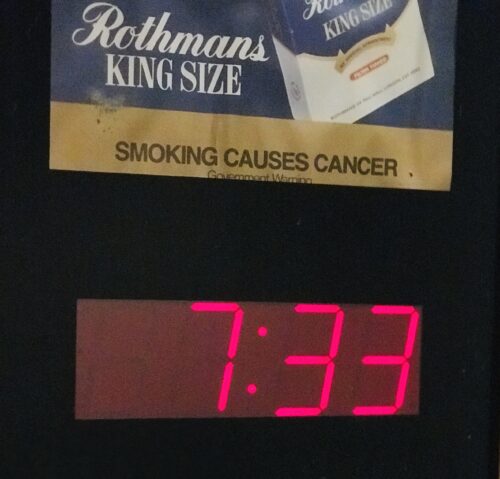
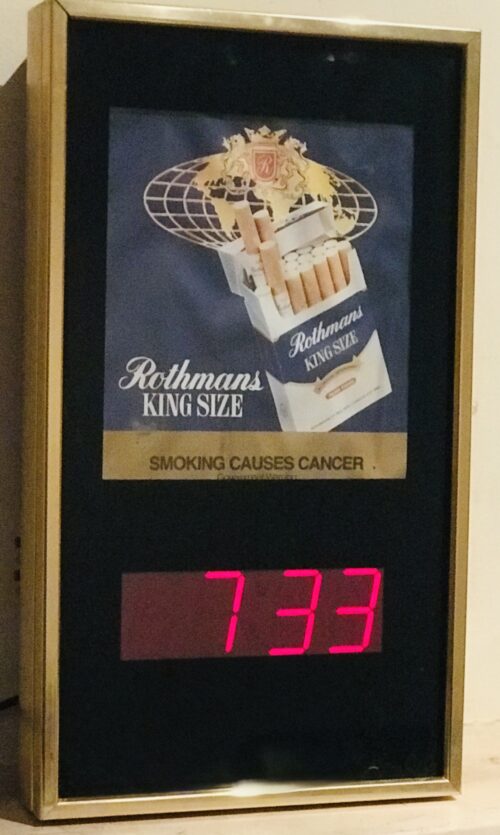


























 Toners won “Snug of the Year” 2010, a competition hosted by Powers Whiskey. 110 pubs across Ireland were shortlisted, and after counting the public’s votes Toners was announced the winner. A snug is a private area separated within a pub and is a timeless feature in a traditional Irish pub. Like the one in Toners, it typically has its own door, a rugged bench and is completely private. Back in the day it was where the likes of policemen, lovers and the Irish literati met up.
Toners won “Snug of the Year” 2010, a competition hosted by Powers Whiskey. 110 pubs across Ireland were shortlisted, and after counting the public’s votes Toners was announced the winner. A snug is a private area separated within a pub and is a timeless feature in a traditional Irish pub. Like the one in Toners, it typically has its own door, a rugged bench and is completely private. Back in the day it was where the likes of policemen, lovers and the Irish literati met up.





